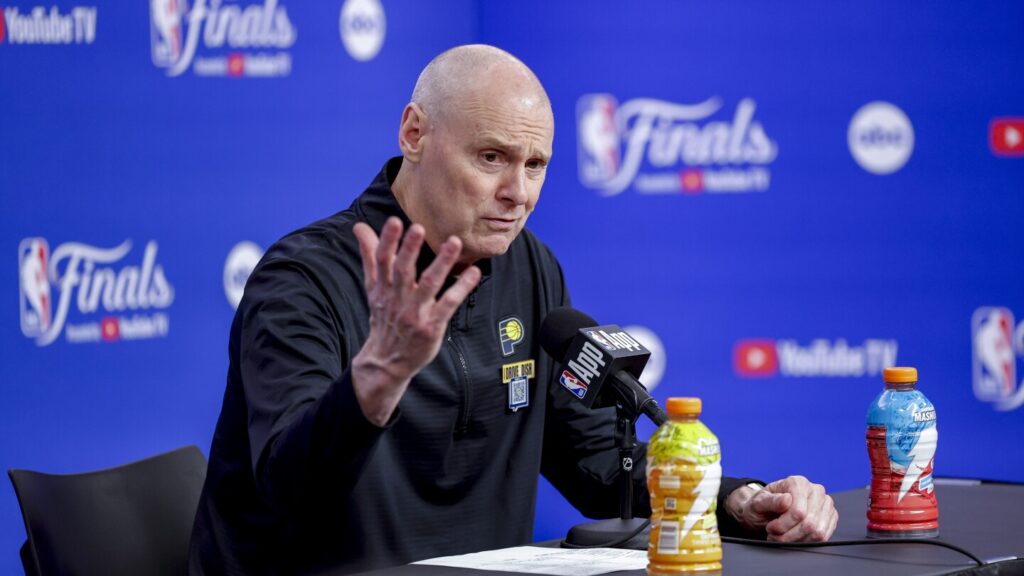Part of the discussion about Luka Doncic’s extension with the Los Angeles Lakers — after LeBron James opted into his contract — was about the Lakers’ potential to have max cap space as soon as next summer. That allows them to retool the roster around Luka Doncic, which sparked some speculation about the Lakers chasing Giannis Antetokounmpo or other stars to slot in where LeBron stands now, building a classic multi-star title team. Multiple superstars has always been the Lakers’ ideal.
Rick Carlisle is questioning that old-school thinking and if that’s the best way to build a contender in the modern NBA.
In a fantastic interview/conversation with Caitlin Cooper of “Basketball She Wrote” (a journalist every basketball fan should follow), Carlisle talked about how the Pacers were built and won, and that serving as a model for other teams (an echo of things he said during the Finals).
“The NBA game has now become a play hard league. It’s not just being top heavy with stars. Roster construction is changing… It’s become more important to have more good players than be top heavy with two or three great players that get all the touches.”
These past NBA Finals were a testament to that. Oklahoma City boasts MVP Shai Gilgeous-Alexander, while Indiana features an All-NBA, Olympian player in Tyrese Haliburton. However, in both cases, these were teams deep with good role players who played hard nightly and fit the teams’ systems and styles — neither team rolled out a player the other team could just instantly target in their top eight. This wasn’t SGA and Jalen Williams and Chet Holmgren covering up for the players below them, OKC rolled out quality players in Alex Caruso, Isaiah Hartenstein, Lu Dort, Cason Wallace, and on and on down the line.
The key to those rosters was not the high ceilings of the stars but the high floor of the top eight — Indiana reached the Finals on the strength of that idea. The Pacers didn’t just have Haliburton, Myles Turner and Pascal Siakam, there were quality players in Andrew Nembhard, Aaron Nesmith, T.J. McConnell, Obi Toppin, Bennedict Mathurin and Ben Sheppard. There was quality depth Carlisle could trust in a way that was not happening with the New York Knicks, for example.
A year prior it was the same thing, the Celtics had stars in Jayson Tatum and Jaylen Brown, but that roster also was eight deep with players Joe Mazzulla could lean into: Kristaps Porzingis, Derrick White, Jrue Holiday, Al Horford, Payton Pritchard, Sam Hauser and on down the line. Two years ago, it was an MVP in Nikola Jokic in Denver but surrounded by depth in guys such as Aaron Gordon, Kentavious Caldwell-Pope, Michael Porter Jr., Bruce Brown, Jeff Green, Christian Braun and more.
During the NBA Finals, Carlisle owned the idea that none of this works without the right star at the top — a team needs a transcendent star or two. However, beyond that, it becomes about depth more than stockpiling stars. It’s not how strong the stars at the top are, but how weak is the weakest link in the chain? And come the playoffs, can opponents pull the chain apart by focusing on that weak link?
Fans are understandably weary of talk of the NBA and its tax aprons, but those are changing how teams are built now. Carlisle has seen the future, as have the Pacers, and they were in the Finals because of it. Expect other innovative teams to try to follow this model.
Read the full article here

